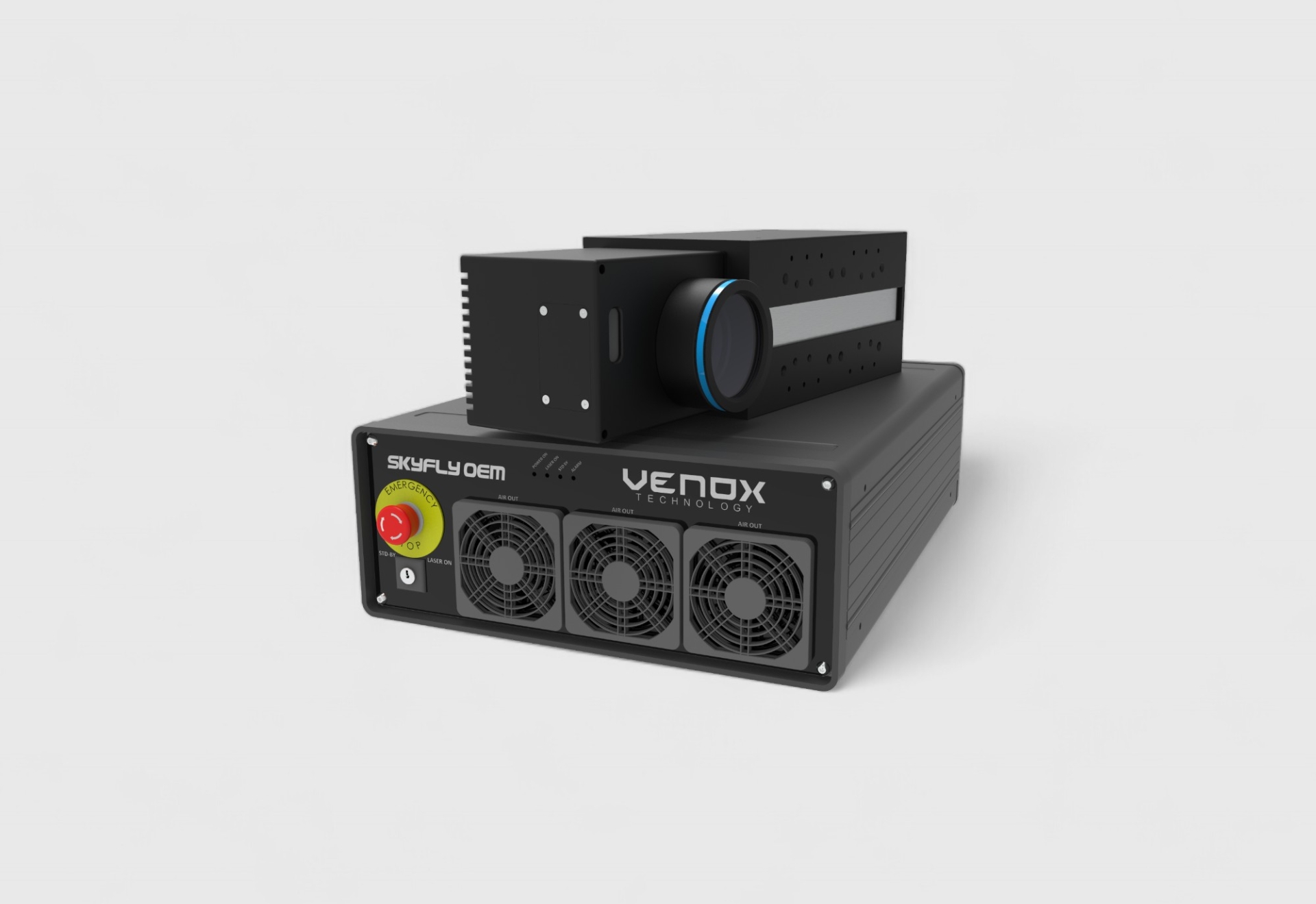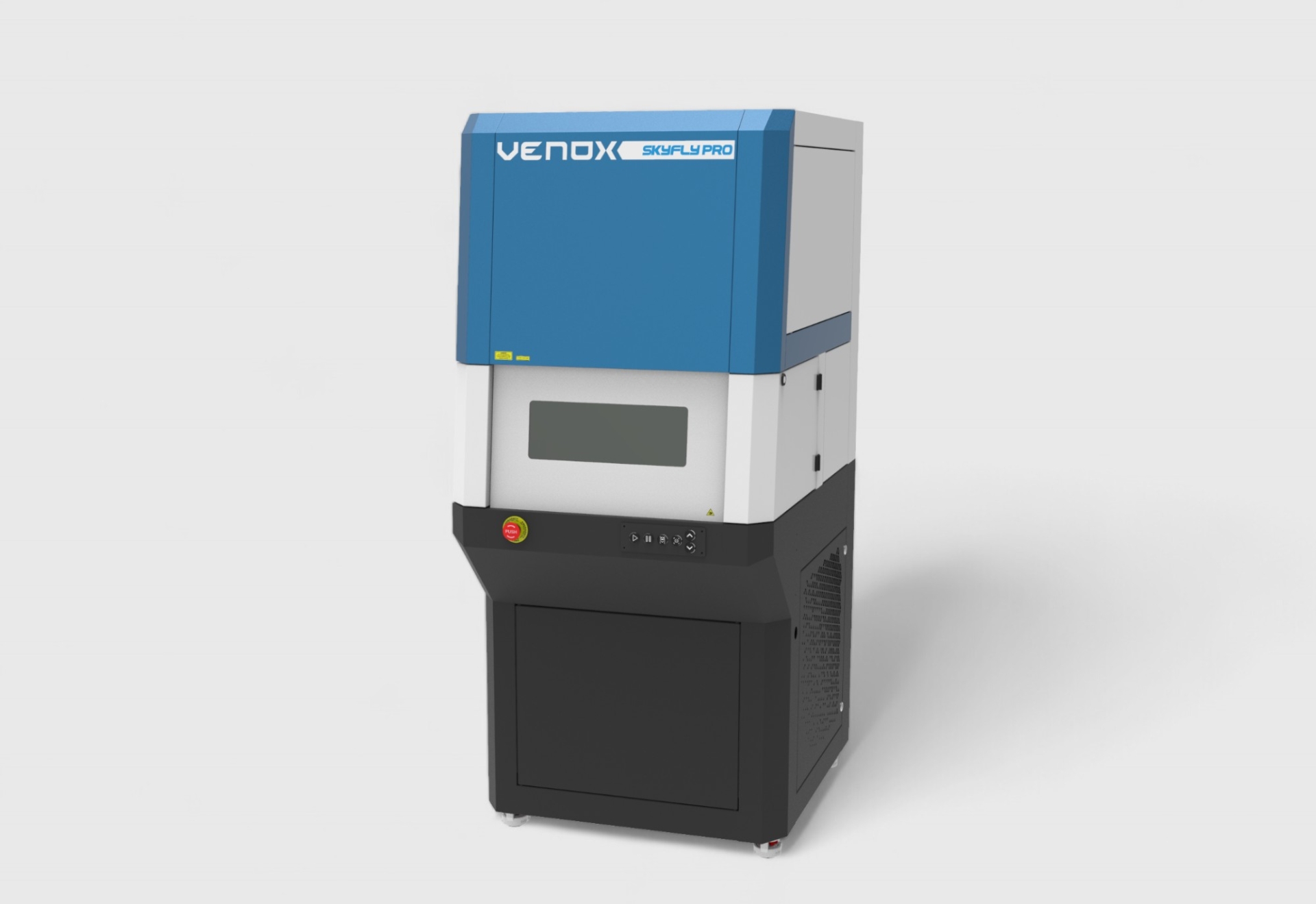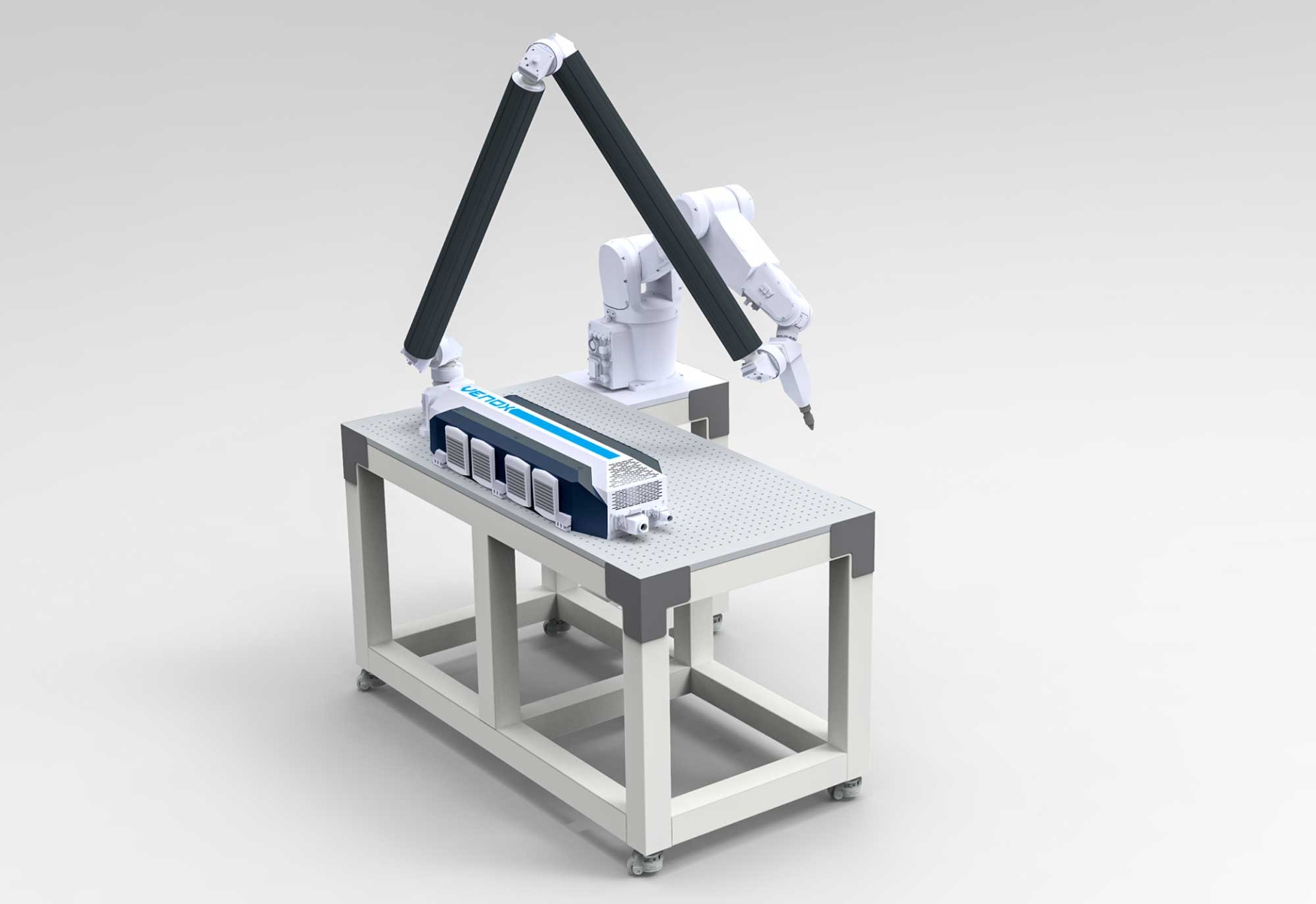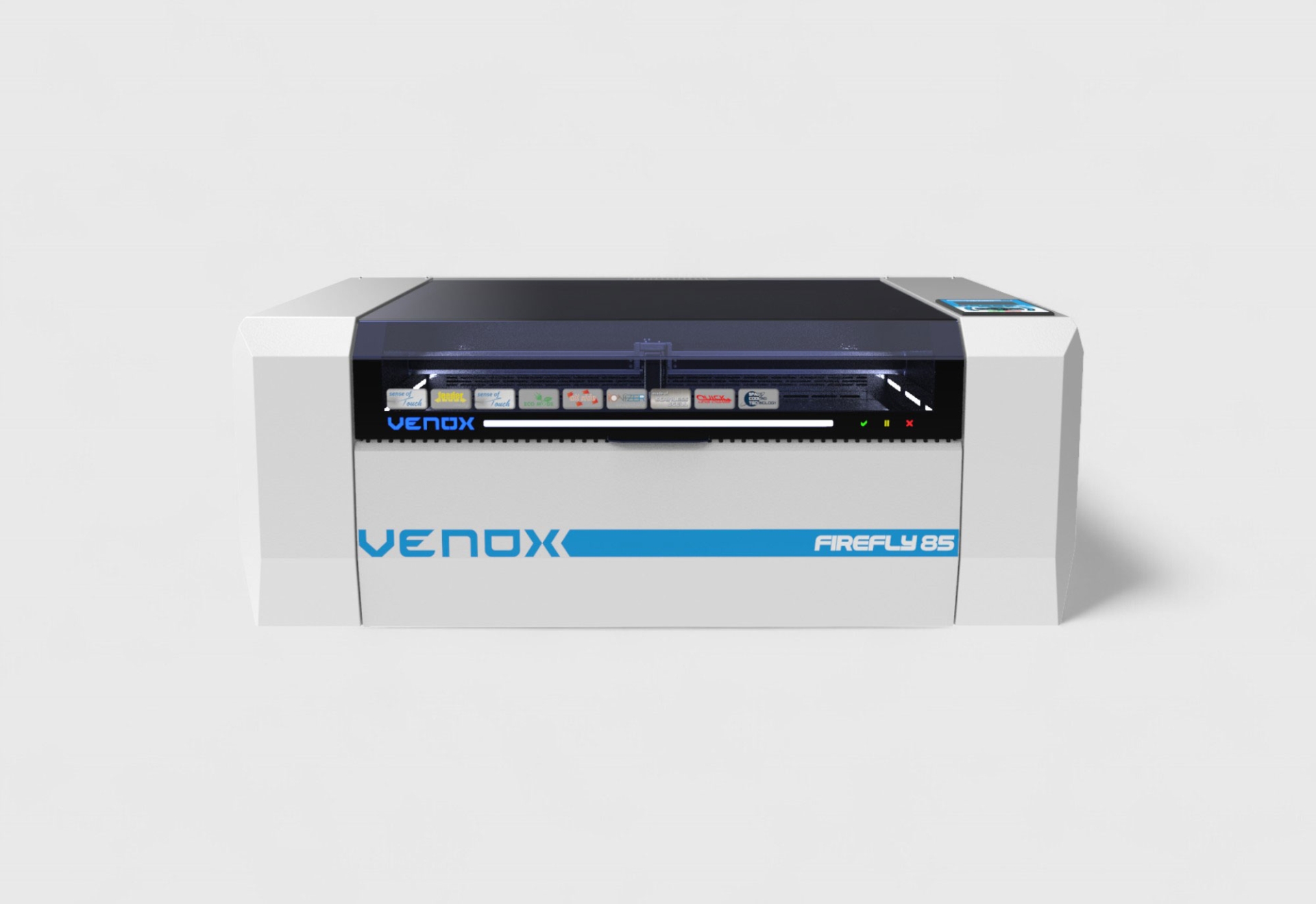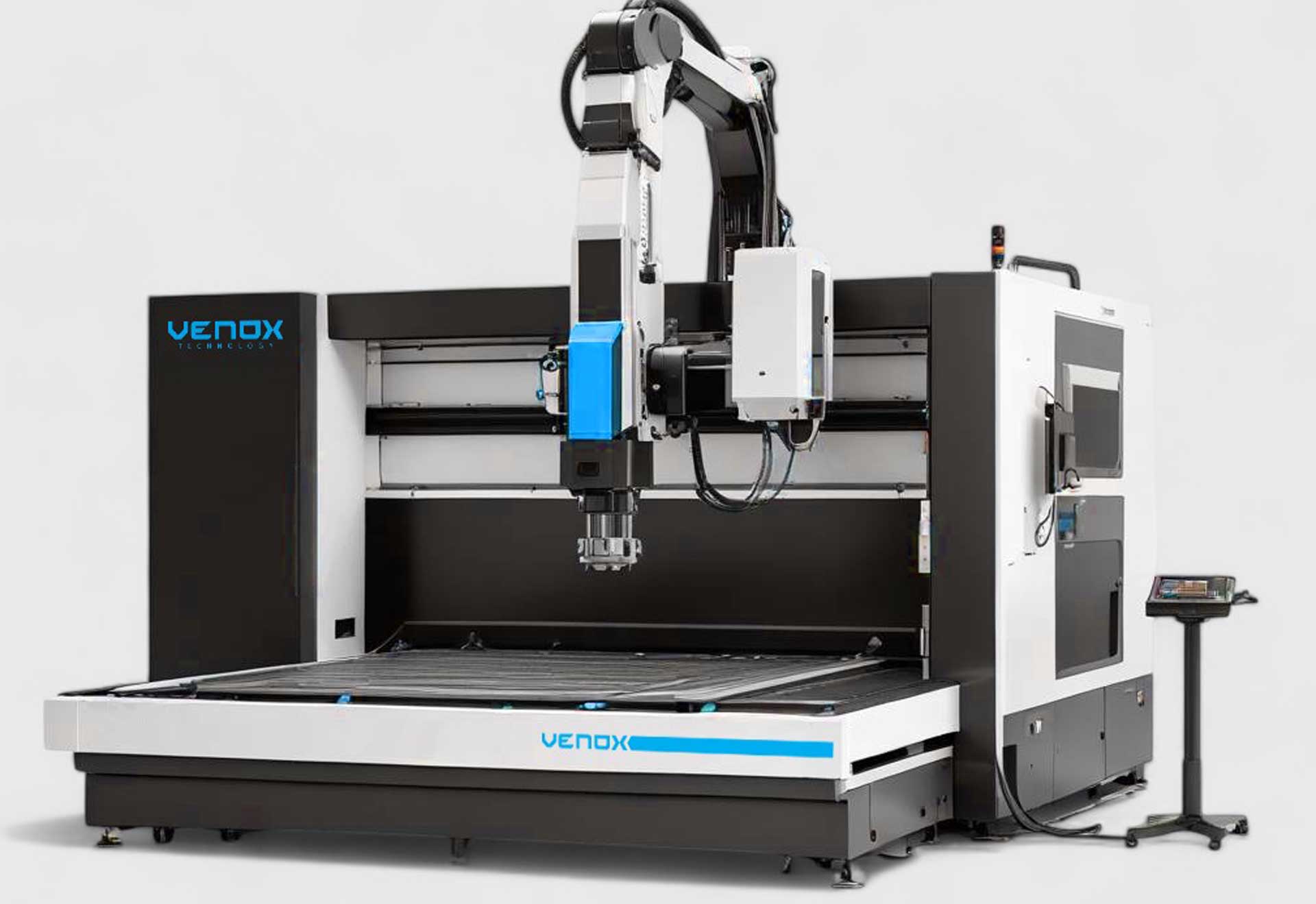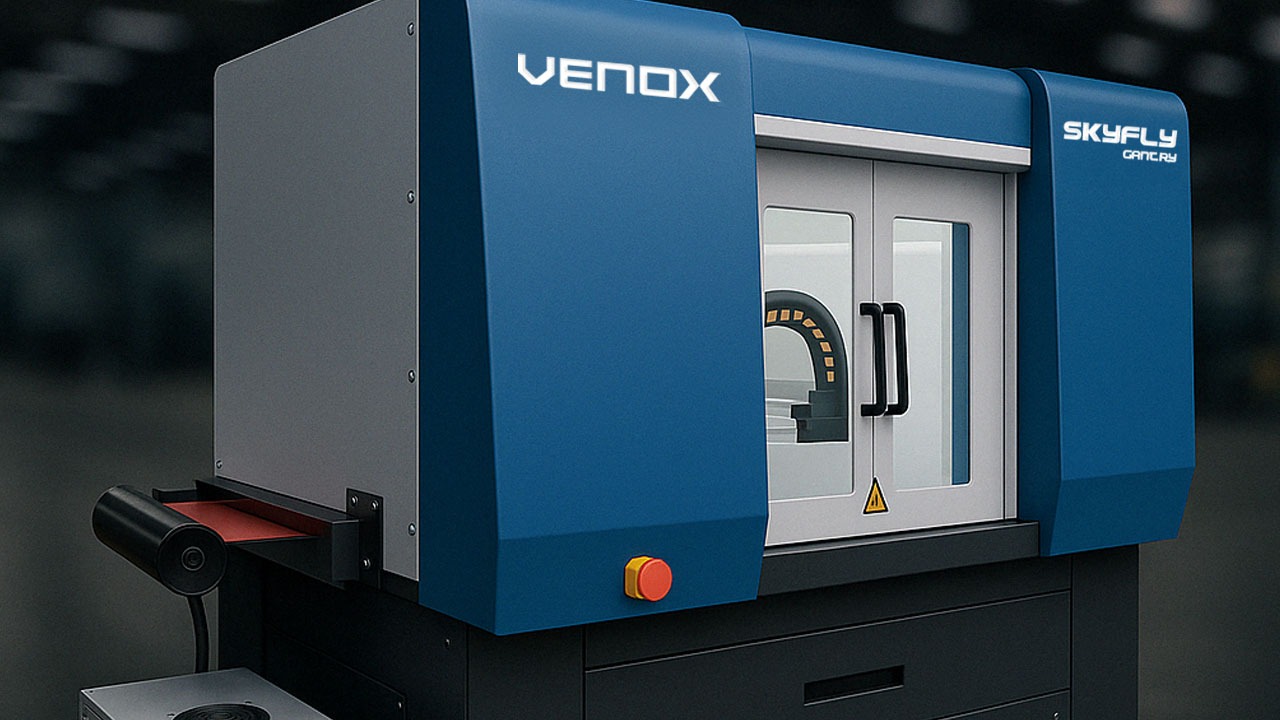Inline Laser Marking Machine: Uninterrupted Coding and Traceability in Mass Production
What Is an Inline Laser Marking Machine?
Direct Integration into the Production Line
An inline laser marking machine is an industrial solution that enables products to be coded while moving on the conveyor without stopping. Thanks to the galvo scan head, sensors, and PLC integration, information such as serial number, date, batch, QR/DM barcode, logo is applied to the surface within milliseconds.
Contactless and Fast Marking
Because the process is contactless, there is no mechanical wear and no paint/label consumption. This approach reduces costs on high-volume lines and maintains readability for a long time.
Which Laser Source Should Be Chosen?
Fiber Laser (1064 nm)
Sharp contrast on metal, hard plastics, and anodized surfaces. The standard solution in automotive, machinery manufacturing, and metal packaging.
CO₂ Laser (10.6 μm)
Fast marking on organic surfaces (paper, cardboard, wood, leather) and many plastic packages. Ideal for expiration codes on food & beverage lines.
UV Laser (355 nm)
Provides microscale coding on glass, silicon, medical polymers, and electronic components thanks to its very low thermal effect.
Machine Architecture and Components
Galvo Scan Head
Directs the beam with high-speed mirrors. Keeps pace with the line with scanning speeds of thousands of millimeters per second. Proper F-Theta lens selection determines both field size and spot diameter.
Dynamic Focusing and Z-Axis Tracking
Maintains clarity and sharpness with autofocus even if product height changes. Raises the quality standard on parts with complex geometry.
Encoder and Sensor Set
Measures conveyor speed and product position in real time to time the marking window correctly. This prevents motion blur and drift errors.
PLC/Robot Integration
The machine communicates with the line PLC via I/O; when needed it works in sync with robot arms or pick&place systems.
Vision and Verification Module
The integrated camera reads and grades codes according to ANSI/ISO metrics; in the event of low quality it triggers an instant alert, reducing scrap rate.
Setup by Production Scenarios
High-Speed Conveyors
For lines with hundreds of units per minute—such as beverage cans, glass bottles, or blister packs—apply single-pass coding with fiber/CO₂ heads. Encoder synchronization is a critical component.
Highly Varied Product Lines
In operations with many SKUs, the machine software uses recipe management and database connectivity to automatically recall parameters during product changeovers; setup times are shortened.
Lines Requiring Critical Traceability
A unique ID is mandatory in automotive, aerospace, and medical. Laser marking systems connect to ERP/MES and generate unique codes by pulling part-based data.
Advantages: Why an Inline Machine?
Uninterrupted Flow and Takt Time Compliance
Marking without stopping the product does not affect the line’s takt time. This directly benefits efficiency and energy usage.
Low Total Cost of Ownership
No ink, labels, or consumables; no cleaning or waste management. With periodic optics maintenance, overall costs remain controlled.
High Readability and Durability
Laser marks resist abrasion, heat, and chemicals. The long-term readability of barcodes/DM/QR codes is proven in the field.
Flexible Data and Automation
Order, lot, and date&time information is pulled automatically from the ERP; variable data is written in real time. Manual data entry errors are eliminated.
Application Areas
Automotive and Home Appliances
Permanent coding on chassis/sub-frame parts, engine components, wiring harnesses, switches, and buttons; a key role for recall management.
Electronics and PCB
Micro-DataMatrix on PCBs, part/lot code on connectors; high contrast at a microscale with UV/fiber combinations.
Food, Beverage, and Cosmetics
With CO₂, expiry/lot coding on packaging, labels, and cartons; contactless, hygienic, and fast process.
Medical and Pharmaceutical
Permanent marking compliant with UDI/GTIN requirements, remaining readable after sterilization.
Technical Parameters and Tips
Power and Speed Tuning
20–50 W fiber lasers are typical for metals and hard plastics; 30–60 W CO₂ is common in packaging. Adjust dwell time and frequency according to line speed.
Lens Selection
A 110×110 mm lens for small parts and high resolution; 200×200 and 300×300 mm lenses for wide-area coding. As lens size increases, spot diameter grows; re-optimize power/speed.
Contrast Optimization
For metal annealing, use low power/long dwell; for deep engraving, high peak power. On plastics, balance speed–power–frequency parametrically to prevent surface burning.
Quality Verification
Use vision grading per ISO/IEC 15415 (2D) and 15416 (1D); target Grade A/B. Link low grades to an automatic alarm.
Software and Data Management
ERP/MES Integration
Work order, lot, and date information are taken directly; the post-production traceability record is updated automatically. Operator errors are minimized.
Recipe and Version Control
A marking recipe is stored for each product family; changes are versioned. This provides digital proof in quality audits.
Operator Interface
Authorization, template selection, live camera preview, and error logs on a single screen. A multilingual interface improves acceptance on the shop floor.
Installation and Commissioning
Pre-Study: Samples and DOE
By performing a Design of Experiments (DOE) with different speed/power/frequency combinations, define the parameter window. Document this window in the SOP.
Mechanical Integration
Mount the laser head to the conveyor with vibration isolation; position guarding and fume extraction correctly against reflections.
Extraction and Filtration
For coated surfaces, use a HEPA + activated carbon combination for particles and fumes. This protects optics life and operator health.
Maintenance and Continuity
Periodic Optics Cleaning
Regularly check the lens and protective glass; dirty optics cause contrast loss and fluctuations in code quality.
Software Updates
Keep code-verification algorithms and ERP connectors up to date. Do not neglect cybersecurity patches.
Spare Parts and SLA
With intensive shift patterns, aim for maximum uptime via SLA; define a stocking policy for critical optics and electronics.
Checklist for Selecting the Right Machine
Material and Surface
Metal: fiber; organic/plastic: CO₂; glass/silicon: UV. If there is coating/epoxy/paint, first evaluate an ablation strategy.
Line Speed and Part Spacing
Is an encoder-synchronized galvo required? Product spacing and vibration level define the parameter window.
Code Type and Quality Target
1D/2D code standard, size, and grade target (A/B). A vision system and reject mechanism may be required.
Integration and Software
ERP/MES connection, database, recipe management. Standard protocols (OPC-UA, Modbus, Profinet) support on both the machine and system sides.
